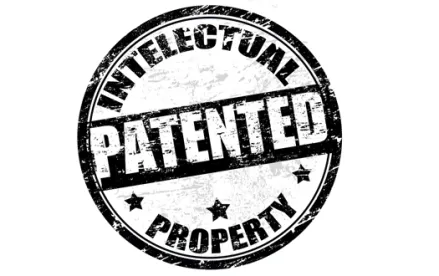Takeaway: Patent Owner failed to establish that assignor estoppel is a defense under 35 U.S.C. § 314(a) given that 35 U.S.C. § 111(a) provides a broad statutory mandate that any third party requester may file a request for inter partes reexamination.
In its Decision, the Board granted institution of inter partes review (“IPR”) of claim 16 of the ’113 patent. In a purchase agreement, Petitioner sold Patent Owner to Newell Rubbermaid Inc. The assets sold included the ’113 patent. Patent Owner alleged that the Petition should be denied because: (1) a forum selection clause of the purchase agreement contractually bars Petitioner from pursuing relief at the Patent Office, and (2) the doctrine of assignor estoppel bars Petitioner from challenging the validity of a patent it sold to another company.
Regarding the latter, Petitioner alleged that assignor estoppel does not apply in an IPR proceeding. Patent Owner stated that it disagreed with prior Board decisions related to 35 U.S.C. § 311(a), which states, “a person who is not the owner of a patent may file with the Office a petition to institute an inter partes review of the patent.” Patent Owner alleged that there are other reasons by which the Board can recognize contractual bars or estoppel based on §§ 314 and 316. Section 314(a) states that IPR may not be instituted unless there is “a reasonable likelihood that petitioner would prevail with respect to at least 1 of the claims challenged in the petition.” As argued by Patent Owner, assignor estoppel prevents an assignor from asserting that its own patent, for which it may have received value upon assignment, is invalid and worthless. The Board stated that, “Patent Owner does not argue persuasively that Section 314(a) should be read so broadly as to authorize implicitly an equitable defense not provided explicitly by the Statute.” Thus, the Board concluded that Patent Owner has not shown that assignor estoppel is a defense that applies in IPR proceedings. Patent Owner’s argument regarding the contractual bar was denied under the same rationale.
The Board characterized the ’113 patent as describing a mode of operation for a tape printer in which the printer automatically generates a plurality of labels. Petitioner asserted that claim 16 of the ’113 patent was obvious over each of the following references: AddressMate User Manual (“Printing the Entire Database” functionality”), AddressMate User Manual (“Importing/Merge-Printing” functionality), Benade, DYMO User Manual (“DYMO”), and Microsoft Self-Study Kit.
Neither party proposed a construction of any specific terms. Patent Owner, however, interpreted “processing said data to identify a plurality of individual label data fields” to require “automatic identification” of label fields. Patent Owner’s interpretation was not based on any explicit description in the Specification. Patent Owner relied upon declaration testimony of a named inventor. The Board stated that inventor testimony on claim construction is afforded little value. Patent Owner did not explain how testimony regarding the “intelligent determination” of the format of the data related to processing data to identify individual data fields. Thus, the testimony was of limited value. The Board construed “processing” to include various operations, such as sorting, manipulating, merging, and computing.
Petitioner alleged that AddressMate User Manual rendered obvious a tape printing method for printing an image on an image receiving tape. Patent Owner did not challenge this argument. Petitioner argued that AddressMate User Manual teaches the receiving, generating, and printing limitations of claim 16. Patent Owner relied on its interpretation of “processing” to distinguish over the prior art. Since the Board dismissed such an interpretation above, it was not persuaded by Patent Owner’s argument. Thus, the Board concluded that Petitioner had demonstrated a reasonable likelihood of prevailing in showing that claim 16 would have been obvious over AddressMate User Manual.
Regarding Benade, Petitioner relied upon testimony of Mr. Gray to support its obviousness contention. The Board agreed with Petitioner that Benade reaches the receiving, generating, and printing limitations of claim 16. Patent Owner again alleged that Benade does not teach the processing limitation, particularly “automatic identification” of data labels. As above, the Board was unpersuaded by Patent Owner’s interpretation of “processing” as recited in claim 16.
Next, Petitioner alleged that DYMO discloses that upon opening an existing label file, the labels open in the new window. Patent Owner argued this was incorrect because DYMO states, in the context of opening an existing label file that the label opens in the window. The Board stated that Petitioner does not adequately explain why it altered DYMO’s description to change the singular to plural. Petitioner’s expert merely provided conclusory statements that were of little value. Thus, the Board concluded that Petitioner had not demonstrated a reasonable likelihood that it would prevail in showing that claim 16 would have been obvious over DYMO.
Finally, Petitioner asserted that Microsoft Self-Study Kit rendered claim 16 obvious. The Board noted that Petitioner had not identified any manner in which Microsoft Self-Study Kit more clearly teaches any particular limitation of claim 16 as compared to AddressMate User Manual or Benade. The Board exercised its discretion that Microsoft Self-Study Kit is redundant to other grounds of unpatentability and declined to authorize IPR based on it.
ESSELTE CORP. v. DYMO, IPR2015-00781
Paper 13: Decision on Institution of Inter Partes Review
Dated: August 28, 2015
Patent: 6,890,113
Before: David C. McKone, Barbara A. Parvis, and Jo-Anne M. Kokoski
Written by: McKone
Related proceedings: Sanford L.P. (d/b/a/ DYMO), and DYMO B.V.B.A. v. Esselte AB, No. 1:14-cv-07616-VSB (S.D.N.Y).



 />i
/>i

